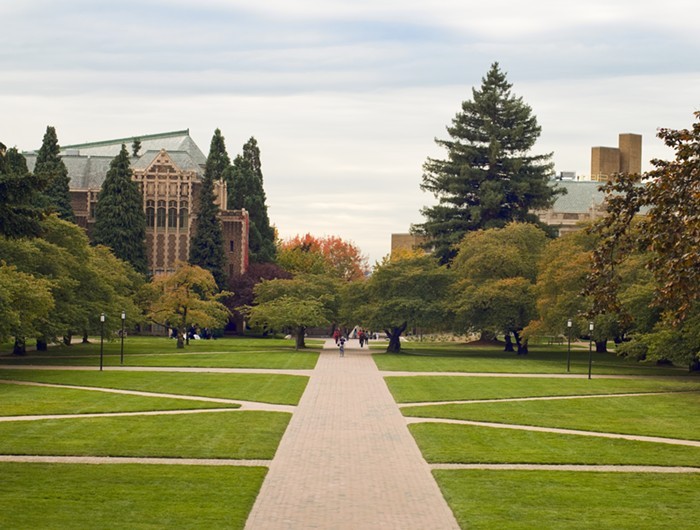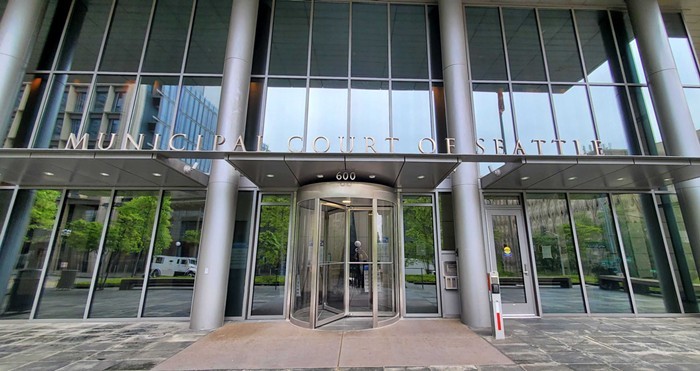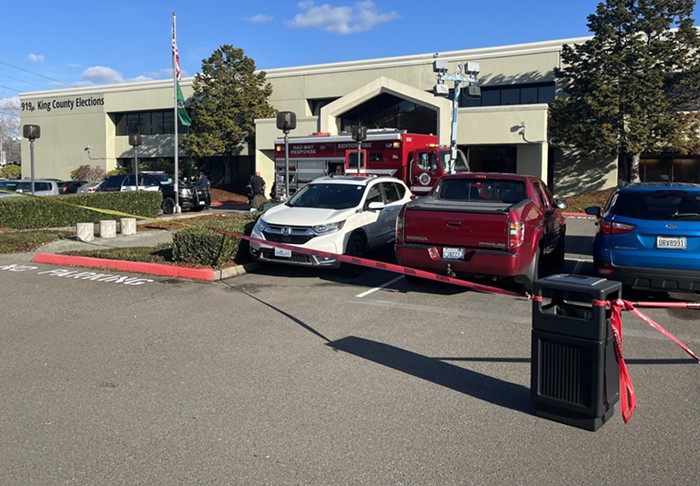Cedar Park is a quiet neighborhood of small, modest houses and dead-end streets tucked into the northeast corner of Seattle a few blocks off busy Lake City Way. Abutting Lake Washington to the east, the neighborhood is pocked with thickets of big, old trees, and, despite its affordability, boasts expansive mountain and water views. In many places, the houses here perch atop steep slopes that are designated "environmentally critical" under Seattle's Critical Areas Ordinance (CAO), which protects the city's most vulnerable lands.
It's ironic then that a provision of the CAO is what allowed developer Berkshire Homes to erect a quartet of 4,000- and 5,000-square-foot McMansions just above a critical area at Northeast 135th Street and 39th Avenue Northeast. Residents worry it won't stop there; the loophole is open to other developers, too, and similar plans are already in the works nearby. Upcoming legislation by CAO author Richard Conlin to limit developers' ability to build massive, lot-line-to-lot-line houses would prevent the most egregious "megahouse" developments, but the underlying loophole would still need to be addressed.
The provision that allowed Berkshire to build its megahome complex was actually intended, Department of Planning and Development (DPD) spokesman Alan Justad explains, "to keep environmentally critical areas as untouched as possible and preserve green areas." The provision encourages developers building near critical areas to cluster housing, rather than spreading it out around a property, on the theory that clustering will preserve larger expanses of open space.
But the legislation had an unintended consequence: It allowed developers like Berkshire to cluster several houses adjacent to an environmentally critical area on lots much smaller than would ordinarily be allowed, extending the property line along a narrow corridor down the hillside into another parcel of undevelopable land at the bottom. The resulting dumbbell-shaped lot Berkshire got was big enough overall to meet minimum lot-size requirements, and allowed the company to concentrate development at the top of the hill, where runoff from the massive impervious surface will roll down into the environmentally sensitive area below.
The houses themselves—all still on the market, despite price reductions to between $998,000 and $1.5 million—are almost comically grand. (The developer, John Urban, describes them as "regular Craftsman-type houses." He denied the existence of any regulatory controversy.) They give the impression of perhaps 16 connected townhomes, rather than the four single-family residences they are. Instead of a front yard, they have a 20-yard-wide strip of asphalt; instead of a backyard, they have a few bare feet of mulch. Instead of trees, they have carefully manicured shrubs and boxwood hedges. "You walk out the back door, you don't get a yard," says neighbor Jeffrey Ochsner, an architecture professor at the University of Washington. "You get a fence that's six feet high."
Residents, including neighbor Rolfe Kellor, unsuccessfully appealed the approval of the project. Kellor lives a few blocks down 39th Avenue, near another lot where a similar multihouse development is in the works. He says the megahouses are "totally out of character with the neighborhood, in terms of the size of the lot, the size of the houses, and the fact that they have no front yards or backyards." Nonetheless, he says, "DPD maintained that as long as the project was consistent with the zoning, it was consistent with neighborhood character."
Justad confirms that "there's nothing legally wrong" with such megadevelopments; but, he adds, "We're not satisfied that this is the best that can be done, and we're looking at how we can apply [CAO] regulations in the future." CAO author and City Council President Richard Conlin called the provision that allowed the megahomes "an interesting loophole," and said it's "something we'll need to address" in the future. ![]()


















